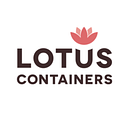Future Innovations in Shipping Container Designs

The newer innovations in shipping container designs have led to the manufacture of smart containers with advanced security systems, tracking technology, and customisation. Keeping in mind the needs of customers and stakeholders of the trade industry and securing the supply chain operations, shipping container manufacturers and architects are bringing about a revolution in container designs. As technology evolves, containers are beginning to integrate it per their needs. Let us learn more about the evolutions in container designs.
History of innovation in shipping container design
The shipping container started as an ordinary piece of metal box to be developed and transformed into the intermodal container it is today. It was difficult to think that a simple box could be redesigned through the years to make it worthy of storage and transport for international shipping. These containers have paved the way for transforming the global economy by boosting international trade and globalization. The idea of shipping containers was developed by the head of a trucking company in the US, Malcolm McLean, in the 1950s. McLean witnessed heavy congestion on highways that were delaying the daily shipment and raising the expenditure of his trucking company. Upon research, he found that international shipments arriving at the port came packed into multiple crates, bags, barrels, and boxes, and unloading each package from ships onto trucks consumed a lot of time. He proposed dismantling the trailer bodies from their chassis and wheels and using them as storage boxes to be stuffed with goods and loaded onto ships.
Shortcomings in the original shipping container design
- It was challenging to dismantle the metal from its chassis and wheels and required cranes to pull it out. The trailer cut out as a container was quite heavy to be carried manually onto ships or stacked one on top of another, and therefore needed equipment and vehicles. McLean hired engineers and architects to build suitable containers, vessels, and equipment designs to counter these obstacles.
- Another shortcoming was that the sea-to-land transport demanded a diversity of containers, with each line demanding a different design for corner fitting to be picked by cranes and forklifts. A need for the standardisation of containers arose.
Highlight the innovations in shipping container designs.
All the shortcomings in the original shipping container model got resolved with time as various industries and architects developed innovative solutions. Different types of containers were built in different sizes, each standardised to be loaded onto any type of container ship or another mode of transport. Since then, container manufacturers have always engaged themselves to optimize container designs to incorporate shipping needs. The world today is continuously transforming itself by integrating technology and upgrading itself. So how can the container designs remain behind? The newer upgrades to shipping container architecture are being made considering the advanced and cutting-edge technology and its usage by the customers and the industry.
- Low maintenance material- Shipping containers are manufactured using corten steel instead of aluminum as it offers longevity and adds strength to support cargo transportation.
- Folded shipping containers- Shipping containers are being manufactured to fold and reduce their volume. It is beneficial when storing and repositioning empty containers that would otherwise consume a lot of space and charge transportation costs.
- Integrated container tracking system- With the demand of consumers to track their shipments throughout transit, containers can now be equipped with IoT sensors to enable tracking and real-time monitoring of the condition of the cargo.
- Temperature-controlled containers- The industrial need to ship perishables internationally has given rise to insulated and reefer containers in the shipping industry. These containers have been designed by utilising temperature-controlled systems to maintain the internal environment of the container regardless of the external environment.
- Smart containers- The new designs contain updated security systems to minimise the cases of theft or tampering of cargo while stored in containers. The advanced locking systems, tamper-resistant seals, and enhanced tracking systems are helping shipping companies offer excellent reliability to consumers.
- Eco-friendly containers- The green revolution in the shipping industry has alarmed everyone with the growing rate of shipping emissions. To counter this, container manufacturers use renewable materials to produce containers to reduce carbon emissions. Manufacturers plan to integrate solar panels on the container roof to promote energy consumption.
- Customised containers- Customers can customise shipping containers to suit their storage needs or commercial purposes. These collaborative designs are facilitating the repurposing of shipping containers. Ventilators, lights, ramps, pipelines, etc., are being added to containers to transform into commercial spaces such as gyms, offices, and warehouses.
These innovations in shipping container designs show how the original design has been modified and transformed to form smart containers that can fulfill the current needs of the supply chain.
LOTUS Containers is a leading marketer of shipping containers that sells and leases different types of shipping containers. We are up to date with container designs to suit our customers’ needs.
